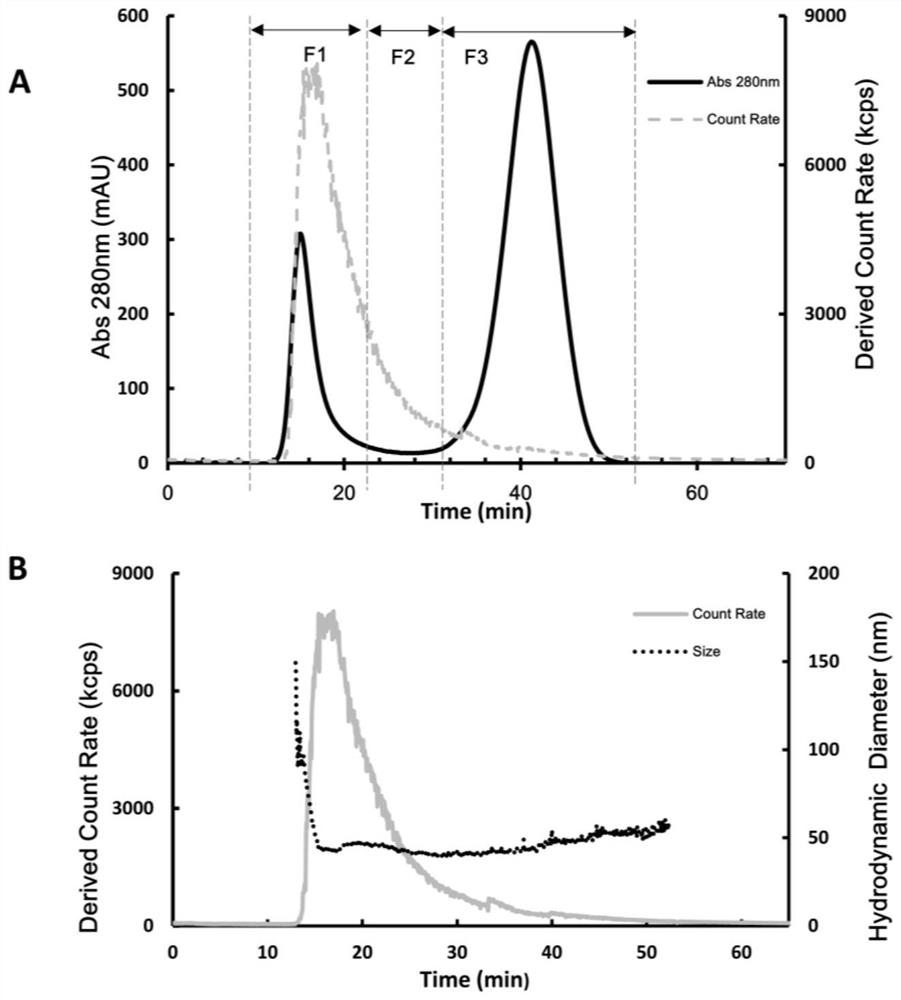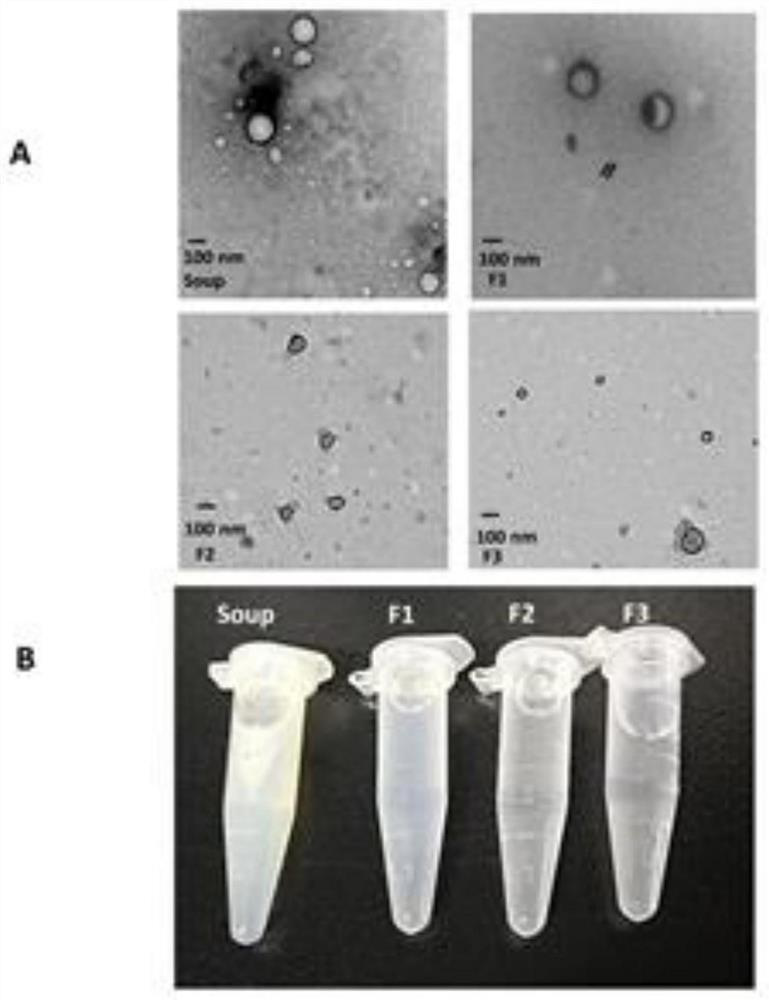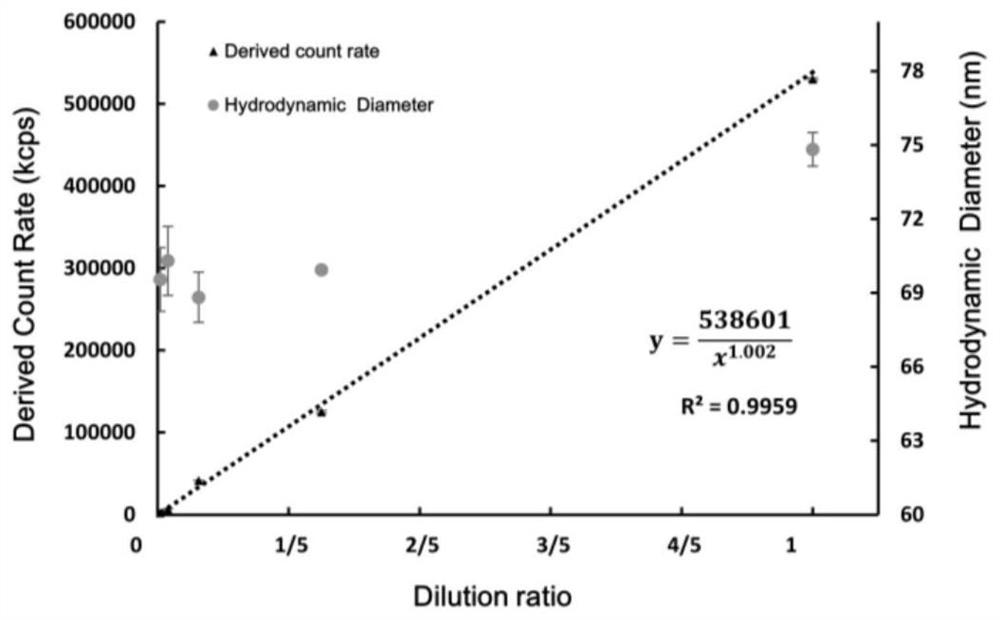A separation method of functional nanoparticles in aquatic shellfish cooking soup
A separation method and nanoparticle technology, applied in separation methods, filtration separation, chemical instruments and methods, etc., can solve problems such as protein denaturation and loss of active components, time-consuming size exclusion chromatography separation, and inapplicability to general sample preservation. , to achieve the effect of mild separation, high yield and convenient operation
- Summary
- Abstract
- Description
- Claims
- Application Information
AI Technical Summary
Problems solved by technology
Method used
Image
Examples
Embodiment 1
[0032] (1) Wash the clams with distilled water and rest for 5 hours, weigh live fresh individuals, put them into a stainless steel pot containing distilled water according to the ratio of material to liquid 1kg: 1L, boil on an induction cooker for 1 hour, cool and filter with gauze;
[0033] (2) Take the crude filtrate in a centrifuge at a centrifugation speed of 15000r·min-1, and centrifuge at 4°C for 15min to obtain a supernatant;
[0034] (3) The supernatant is quickly separated by a gel exclusion chromatography column (10mm×120mm). The column filler is SephoraseCL-4B. The column is filled with 0.05M phosphate buffer (pH7.2) and used for equilibrium. The flow rate is: 0.5mL / min, the sample volume is 1mL, and the peak of the functional nanoparticles is detected by the ultraviolet band 280nm combined with the online dynamic laser light scattering instrument (SEC-DLS) (see figure 1 ), which is different from free protein components. Collect in different tubes, each tube is 2...
Embodiment 2
[0035] Example 2: SEC-DLS can continuously separate the nanoparticles in the clam soup and detect the nanometer size on-line, and the nanoparticle population of 150-40nm can be obtained, and the resolution can reach 1nm. Separation spectrum see figure 1 , the particle morphology see figure 2 , figure 2 The comparative reference Soup in refers to the supernatant.
Embodiment 3
[0036] Example 3: Compared with the original soup particles, the size of the nanoparticles obtained by SEC does not increase or decrease sharply, indicating that the SEC separation conditions are relatively mild. See you separately image 3 and Table 1.
PUM
| Property | Measurement | Unit |
|---|---|---|
| pore size | aaaaa | aaaaa |
| particle diameter | aaaaa | aaaaa |
| particle size | aaaaa | aaaaa |
Abstract
Description
Claims
Application Information
 Login to View More
Login to View More - R&D
- Intellectual Property
- Life Sciences
- Materials
- Tech Scout
- Unparalleled Data Quality
- Higher Quality Content
- 60% Fewer Hallucinations
Browse by: Latest US Patents, China's latest patents, Technical Efficacy Thesaurus, Application Domain, Technology Topic, Popular Technical Reports.
© 2025 PatSnap. All rights reserved.Legal|Privacy policy|Modern Slavery Act Transparency Statement|Sitemap|About US| Contact US: help@patsnap.com



